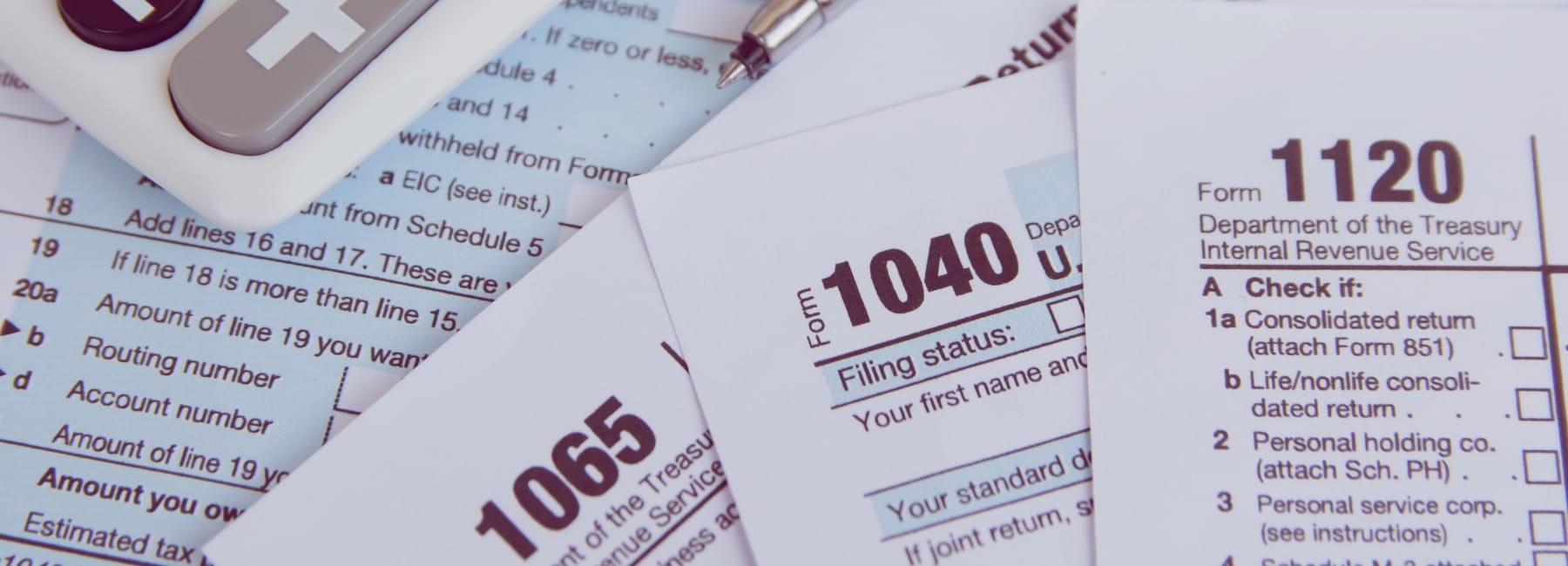Business Content
10 Business Tax Forms Explained

Doing taxes is nobody’s idea of fun.
And for small-business owners, the paperwork can get pretty complicated.
You may need to issue a 1099-MISC to vendors or contractors who were paid at least $600 during the year.
In this quick guide, we’ll cover 10 key IRS forms and what business owners should know about them.
- Form 940
The Employer’s Annual Federal Unemployment Tax Return (FUTA) reports your FUTA tax liability for the first $7,000 of each employee’s wages. As a business owner, you’re normally required to pay FUTA tax if you paid at least $1,500 in wages to employees in any calendar quarter. - Form 941
The Employer’s Quarterly Federal Tax Return reports the taxable wages, tips, other compensation, Social Security tax, and Medicare tax withheld from employees’ paychecks and the employer’s share of Social Security and Medicare taxes. In most cases, you’re required to file this form every quarter if you have employees. - Form 1040 Series
A set of quarterly tax forms used by individuals to report their personal income and pay taxes owed. The series includes:- Form 1040: The Individual Income Tax Return is the main tax form used by individuals to report their income and claim deductions and credits. You can report your business income and deductions on this form if you’re a sole proprietor, single-member LLC, partner, or S-corporation shareholder.
- Form 1040-ES: The Estimated Tax for Individuals form is used to pay estimated taxes on income that is not subject to withholding. You may need to pay estimated taxes if you expect to owe more than $1,000 in tax for the year.
- Form 1040-X: An Amended U.S. Individual Income Tax Return is used to correct errors or omissions on a previously filed Form 1040. You can use this form to correct mistakes on your tax returns and claim additional potential deductions or credits.
- Form 1065
The U.S. Return of Partnership Income form is used by partnerships and multi-member LLCs to report income, deductions, gains, and losses to the IRS on an annual basis. - Form 1099 Series
A set of tax forms used to report income other than wages, salaries, and tips. The series includes:- Form 1099-MISC: The Miscellaneous Income form is used to report income that is not reported on a W-2, such as income from freelance work or rent. You may need to issue this form to vendors or contractors who they paid $600 or more during the year.
- Form 1099-NEC: The Nonemployee Compensation form is used to report payments to nonemployees, such as independent contractors or freelancers. You are typically required to file this form if you paid at least $600 to a nonemployee during the year.
- Form 1099-DIV: The Dividends and Distributions form is used by financial institutions to report dividends and other distributions to individual taxpayers.
- Form 1120 Series
A set of annual tax forms used by corporations to report their credits, deductions, income, gains, and losses to the IRS. The series includes:- Form 1120: The S. Corporation Income Tax Return is used by C corporations that are subject to federal income taxes at the corporate level to report their tax-related information.
- Form 1120-S: The U.S. Income Tax Return for an S Corporation is used by S-corporations to report their tax-related information. S-corporations are pass-through entities, which means that the income and deductions are passed through to the individual shareholders, who report them on their personal tax returns.
- Form 1120-C: The U.S. Income Tax Return for Cooperative Associations is used by cooperative associations to report their tax-related information. Cooperative associations are organizations that are owned and controlled by their members, who use the organization to collectively market their products or services or to purchase supplies and equipment at a lower cost.
- Form W-2
The Wage and Tax Statement form that employers use to report the wages, tips, and other compensation paid to an employee, as well as the taxes withheld from their paychecks. You’re required to provide this form to each employee by January 31 of the following year. - Form W-3
The Transmittal of Wage and Tax Statements form that employers use to transmit copies of Form W-2 to the SSA. You’ll need to file this form by January 31 of the following the year in which the wages were paid. - Form W-4
The Employee’s Withholding Certificate form is used to indicate how much federal income tax they want withheld from their paychecks. You are generally required to provide this form to each new employee when they start working and may also need to have current employees update their W-4 if their tax situation changes. - Form W-9
The Request for Taxpayer Identification Number and Certification form is used to request the taxpayer identification number (TIN) of a vendor or contractor. As a business owner, you’re required to request a W-9 from any vendor or contractor to whom you pay $600 or more during the year and use the information provided to report payments on Form 1099-MISC.
An Asset to Your Business
If you’re looking to optimize your approach to business taxes, consult your financial institution.